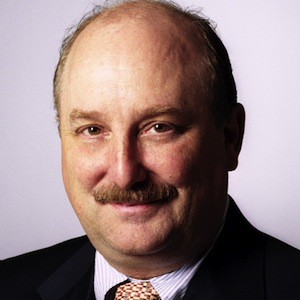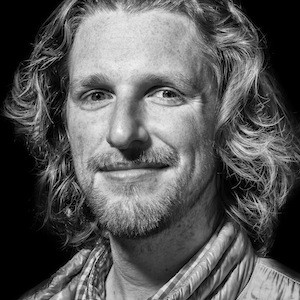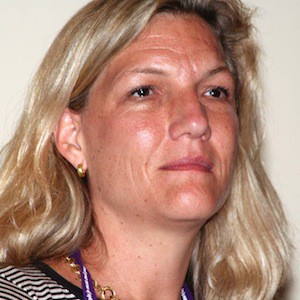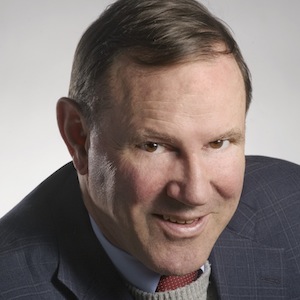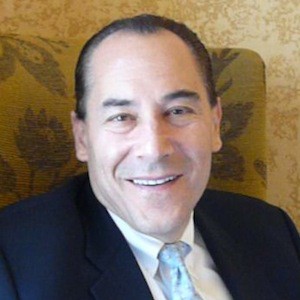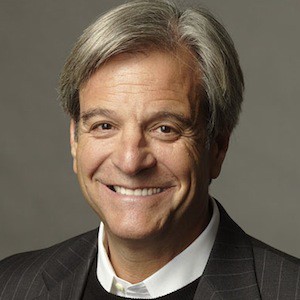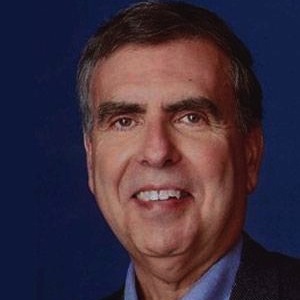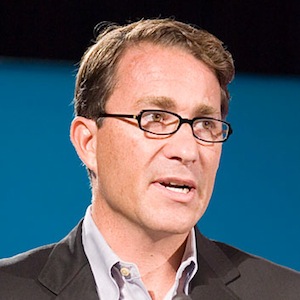Paul: It’s March 26th, and we’re in Cambridge. It’s Paul Sagan, John Huey, and Martin Nisenholtz.
Paul: We’re doing the oral history of when news ran into digital technology, and going back 40 years and going forward. Maybe we could start with, not the end, but the beginning and your first time, and when you either first saw digital technology colliding with or sneaking in on the media business, or where you said, “Wait a minute, this is not like yesterday.”
Alan: It goes way back. I was online in ’71 and ’72, as a student at MIT. Actually, together with some professors, sold a software set of programs to help manage Standard & Poor’s “Outlook” magazine, subscription management and their financial statements.
I used to carry a big Samsonite suitcase with a very slow acoustic coupler terminal. We ran it out of a time sharing computer in Central Square. I was online a long time ago, and had always thought about the implications of that.
I didn’t use it a lot in my consulting days at BCG, except for computation, but when it came to affect content, one of the…I’ll come back to Viewtron, but when it came to the first investment commitment on the part of the Post Company, I was the Vice President in charge of strategy, investments, and so forth.
We bought a company that turned out not to be a success after 15 years, called Legislate, which took the Federal Register and all the Bills moving through Congress in all their versions, and made them available online for folks who wanted to monitor what was happening as far as introductions, amendments, and progress. That was content being affected by…
Paul: That would have been…?
Alan: ’83.
Paul: Pre web, pre dial up, pre consumer? [indecipherable 04:05] So early, but not consumer yet.
Alan: Not consumer yet, although I did look at Viewtron when I first came to the Post Company, and said, “Hey, have a look at this. [indecipherable 04:20] Ritter was doing it.” I embrace technology. I was given training in what have you. That was, I believed, before it was called Alpha Mosaic. It was really clunky, and it was like $30 a month. George Lucas was in the movie theaters I was thinking if people go on Saturday night and they see these great constructions, computer graphics, et cetera, whatever else it was doing, costuming, and they’re going to come and look at these mosaic pieces. I didn’t think they were ready. So we declined, I guess, on the strength of my recommendation to get involved with that. But it wasn’t that we weren’t going to continue to monitor it.
I should have scrapped my background through those years to see when I first got exposed. Bob Kaiser and I, Ralph Terkowitz, all began thinking about the implications for digital media for the consumers starting in the early ’90s, I think ’91, ’92, when we started Digital Inc. We thought it was a clever name, before the Web. That was proprietary on AT&T interchange, which had its own issues. But good partners not such robust technology.
We began to build a team there and sold it on a subscription basis. I think we had, before we made the decision to go to the Web, 30,000 paying subscribers at $30 a month.
Martin: Competing then was CompuServe, Prodigy in the proprietary space. This was your way in into a walled garden.
Alan: Yeah. That’s right. Don Graham and I were making a sales call in Chicago to a major client. We were going to the airport in Chicago. I was talking about the Web and how it was coming on. Don and I always put our heads together on these things. We decided, “You know what, we’ve got to get to the Web.”
So, forced march, cell phone call from the back of a cab, “Changing strategy. We need to move off of the proprietary system.” Because as I always put it, “We are winning the county track meet but the Olympics lay ahead. We need to have a heck of a lot more subscriptions than that.”
We shifted the model from pay to advertising-supported.
Martin: Before we get there I don’t want to lose the legislate track because a lot of newspaper companies in the early ’80s invested in and had fairly interesting B2B products. Dow Jones obviously had the biggest investment with Telerate but we (The New York Times) had the (Times) Information Bank which we then sold to Mead.
John: Dow Jones also had a News Retrieval.
Martin: Dow Jones had News Retrieval. Right.
Martin: Legislate seems like a perfect fit for the “Washington Post.”
Alan: It was.
Martin: Why didn’t it succeed?
Alan: Because that content became more freely available and the subscription model didn’t work. There wasn’t a competitive wall around it.
I think we had by far the best technology available but “good enough” won.
Paul: That hasn’t happened in financial news but it happened in political news.
Alan: It wasn’t news. This is what Bloomberg is doing now. It wasn’t news. We were taking content that the government printing office was putting out and making it instantly available. We didn’t have a newsroom.
Martin: It wasn’t proprietary.
Alan: We had a few editors and verticals trying to organize materials or add stuff to it. But it wasn’t like they were out on beats.
John: You had a technology background and you’ve been online…
Alan: More of a user technology background. Yes, I used to program computers and build compilers but I wanted to get to the applications.
John: You went to MIT. You weren’t an English major, I’m guessing.
Alan: I did go to law school too. So I can write.
John: That’s debatable why you were still writing. I’m sure you can write.
By this time you’ve been looking at this for a while and you’re in a very high position in a newspaper company, publishing company. Are you more excited about the possibilities of this technological coming or are you more fearful of its threat to the business model?
Alan: Let’s just call it a pounding headache where I was determined to make sure we were ready for that future. The entire decade of the ’90s. I could see it coming our way. I wanted to get ready. The Post company got in very early and lost a lot of money, but laid the foundation for what could well be the future. The future of that operation being digital.
We did it at Newsweek. We did it, to a lesser extent, with commitment to TV stations. We were embracing early broadband for cable. As AOL was coming on, I’d go to the movies, there was Sleepless in Seattle. There was the email going back and forth. Everybody’s laughing and I’m suffering. I’m thinking, “The behavior, people in restaurants are talking about ICQ.”
I’m listening to those things. People are eating their salad. I’m thinking, “People’s behavior is changing.” That was all throughout the nineties.
Paul: What happened? Because it didn’t end well for the whole industry.
Alan: What happened? Without getting into the details…
Paul: We’ll take some detail.
Alan: No, I am going to be careful here. We too bid for the Boston Globe. He knows this story better than you will. But we didn’t bid as much as they did. Incidentally, the Boston Globe was very innovative, with the likes of Lincoln Millstein and others creating Boston.com. The point of the story is, we didn’t see a perpetual, bright, growing future for that print property.
You can read it more broadly. We set our price accordingly, so we didn’t win the auction. The reason why I tell you that story is, I’d forecasted, with the kind of judgment that a generalist brings to it, that there was going to be shrinkage of print revenue. It hit harder and faster in the mid 2000s than I forecasted. Even at our price, we’d have overpaid.
Once things got going in the ad supported world, they began to follow each other, with momentum, the herd, enlightened or otherwise. So what happened was it didn’t migrate entirely, but it’s migrated harshly and significantly. I don’t think it’s going back. I long bought the thesis that, if you could target audiences and measure, an accountability cycle, as to what I got from what I paid, you got past the classic…
The classic department store magnate in Philadelphia who said, “Half of it works. I’m just not sure which half of my advertising is…”
Paul: But isn’t it true, what happened was actually, the math was 10 percent worked?
Alan: I used to call it, in my talks, dollars to dimes.
Paul: That’s about right. You’ve got a dime showing up in digital, for a dollar in print. Then Google took half of it.
Alan: Yeah. But you’ve got to step way back. We’re wandering a little. You’ve got to ask yourself, what is the new equilibrium on marketer’s spend. It’s a mixed change. But they’re not going to put in their pocket the savings of the 90 cents. They’re going to redeploy it in ways that they can sell more goods. It just got deployed away from traditional media.
Paul: And news.
Alan: That’s another matter altogether. If you look at the investing I’ve done since, Polaris has done since, it’s been much more vertical ized. You and I have, over the years, talked about the value of health audiences. They’re trading in $20 and $25 costs per thousand (CPM). Remnant general news is 25 cents. Financial, I’ve got an investment in a financial vertical leader.
CPM’s at $100 per thousand. Smaller audiences, but exactly the right audiences. I’ve got another investment, talking to patients. Those are measured in thousands of dollars, CPM’s. Because you’re talking to the patient.
John: The other thing that happened to the mix, at that same time, simultaneously, is the cable television industry grew up from not particularly much of a factor in national advertising to being a huge factor.
Alan: More targeting.
John: Yeah, that’s targeted. It’s vertical. They take their audience. So it wasn’t just digital. Then cable television started adding digital components.
Martin: Let’s go back to the point at which the industry tried to come together. One of the themes that we’ve chatted about is that the industry missed who it was competing with. There was an attempt, early on, to create something called Career Path, which would have created a large…
John: Classified Ventures. New Century Network.
Martin: All of those things failed. Is that because joint ventures, in consortia just simply can’t work, or is there something about the journalism or newspaper industry that is particular about that failure?
Alan: I don’t think it’s particular to the industry, as much as it is the inherent difficulties of pulling a joint venture off. I could go on at length about that. Occasionally they work, but most often they don’t. Because people’s agendas are not aligned. The rewards of success are confusing. Execution by various partners is a function of their conviction and their defense of incumbency, as opposed to their aggressive embrace of change.
We were always forward leaning in that regard and some of our fine partners weren’t. You couldn’t establish the uniform national footprint. What was the motivation for…Like I said, I could go on at length about cannibalization. My mantra, around The Washington Post company, was, “I want to anticipate rather than react. I want to experiment in the market, rather than study. I want to cannibalize, rather than defend.”
People got sick of me saying that. But I went around for nine years saying that, when I was president. So that was our bias. We didn’t have that necessary alignment. I recall how reluctant, at times, The New York Times Company, was to come into. It ultimately became a good partner, but other times…Their quarterly sales budgets.
“What do you mean? Let’s have these four legged sales calls. That’s my client. Not your client.”
John: Was ownership ever an issue. Because in the newspaper business, you have these wealthy oligarchs who were used to having rule over their domain? I’m not talking about one in particular.
Alan: I think they had a bunch of Martins and Alan’s around, saying. “Wake up. The world’s changing.”
John: Were they listening?
Alan: In varying degrees, yes. But listening and conviction and action are different matters.
John: When was the first time you saw the threat of a free classified and what it could mean to the newspaper industry?
Alan: I’ve been thinking about it. I don’t know the exact date. But it came to a head with a company called Junglee that was scraping our classifieds and then selling a frame of revenue around it.
Martin: Didn’t you then acquire that company?
Alan: Yes. I went out to see the venture capitalist, which I am now, and I said, “There’s problem here. We created that content and you’re not going to take it from us. If you try, it’s going to be you and your children and your grandchildren who are going to be doing battle with us. So we need to figure out another plan here.” In fairly short order, we bought it.
Then we went around, trying to Junglee in a way that other media organizations were trying, fair and constructive. As opposed to exploitative. So we bought Junglee, turned out to be a very good investment.
John: And then? The evolution of the classified in the industry?
Alan: Classified Ventures, Career Path, but there was also…
Martin: Brass Ring.
Alan: Brass Ring got into it very early.
John: Why did Craig end up with the position of share that he ended up with? What explains that phenomenon, other than free?
Alan: Give me more context.
John: Well, Craigslist comes along…
Alan: Oh, I was thinking about Craig (indecipherable).
[laughter]
John: No. Craig Newmark, who we had in here, recently.
Alan: Because in the world of classifieds…You didn’t spend as much [indecipherable 18:27] I did. When you have the market under one tent, the bazaar is concentrated in one place, even if its clunky, not elegant, maybe even dirty, if its all there, you are going to go. He had aggregated, early and comprehensively a whole bunch of supply and content. Others came along too late.
Martin: Another theme that keeps coming up is the cultural one. You’ve touched on it, already, a couple of times. But Digital Inc., separate organization?
Alan: Yeah.
Martin: So from the outset you’re creating a separate organization?
Alan: We started out inside The Post building. There were all kinds of tension and well meaning, principled contention. Don and I concluded, we needed to give these guys a chance to blossom. We moved Digital Inc. to Virginia, out of reach of The Post. It didn’t meant the phones didn’t ring and it didn’t mean that those guys didn’t get summoned, regularly, back to the newsroom or the newspaper business side.
Which, of course, was a drag on their time and their efforts. Probably, to a degree, it’s still going on. There was a proprietary client ownership. “You can’t go there first with your 10 cent offer when I’m selling a dollar’s worth here.” All of which slowed down the blossoming of those things. We should probably make a footnote. I’m not sure we’ll get there. Which is pay versus advertising supported.
That was a big decision. I remember making the decision on the couch in my office with Don. Then the other debate, where the winning argument isn’t clear. Was it going to be nationally oriented or national and local. Because The Post was so strong in local, as well as a good national brand in certain areas. So we should come back to that at a point.
John: We had a long talk with Gordon Crovitz, who made the argument that it was an easier decision for DOW Jones to stick with pay, because they had long been selling their news service on a 24/7 basis. It wasn’t such a cultural shift.
Alan: Not at all. Actually, I’m surprised he derived the justification from the news service. As an individual businessperson, I have to read The Wall Street Journal.
John: As a former Wall Street Journal reporter, I can tell you, the DNA there was if you found news you didn’t wait for the paper. You broke it.
Alan: Culturally, very important difference. There was a debate that Len Downie and I had, when the Microsoft trial was going on and Rajeev [indecipherable 21:35] was coming out with reports at 11:30 in the morning, following the morning court sessions. They were great and we wanted to put them up in WashingtonPost.com. Len said, “The story’s not fully reported yet. We’ve got to wait until later in the day.”
He was right. It wasn’t fully reported. The question was, do you go out with a half baked egg or not?
John: Which DOW Jones had been doing for 100 years. Because you sit in the room next to the Reuters guy. As soon as you hear news, you jump up, you run out of the room, you get on the phone, you break the news.
Alan: But that wasn’t in our culture on general news.
John: Or any other newspaper.
Alan: Len obviously had his head and heart in the right place. He was focused on getting a daily paper out which was the best possible.
John: Your point, that you were getting ready to make, was that The Journal was less of a commodity, because they had…
Alan: I don’t think there’s a comparison. I would have done the same thing at the journal. The trouble with general news, as opposed to financial news, it’s available in lots of places. The market of advertisers doesn’t value it as highly, because of the general readership and the first paragraph that’s available everywhere.
John: We’ve got to go back and cover a lot of ground, but since you’re rolling on this and you’ve clearly thought about it, I have to ask you a question. What’s the future of the general news business?
Alan: It’s tough. I don’t have the obvious answer. I’m not suggesting there isn’t an answer.
John: Some people argue that there never was a general news business. That it was always bundled with other things. It’s just a rebundling.
Alan: Think about the bundling of advertising. You knew where to find the tires in the newspaper. Maybe not in The Times. But in any local paper you knew they were going to be in the sports section. You knew where to find the white sales in January. They were in the A section, even if you didn’t know where Sudan was. Now, if you’re shopping for white sale items at a good price you’re thinking about Amazon.
You’re probably going to some auto website to think about tires, with price discovery there. I’m talking largely newspapers, but it affects other media too. Part of the information that people valued was the messaging from the advertisers. That became unbundled, together with ESPN doing what it’s doing in sports. I’m not sure who’s covering city hall anymore, except for the local news and TV stations.
But the TV stations have, because of cable, been forced into ambulance chasing and stories that aren’t as policy oriented.
Paul: So if you want to be a corrupt politician, go local?
Alan: Yeah.
Paul: No one’s watching, in a lot of places.
John: Run for the school board. Nobody knows who you are and that’s where all the money is.
Alan: Yeah. I’m not suggesting that people are scheming to do that.
John: They’ve always been scheming to do that. The school board has always been where they go. That’s where the money is. It’s where you can get your uncle the janitorial contract. We had one example that grew right up out of The Washington Post. I don’t know if it makes money or anything. I know you’re long gone from The Washington Post. But this whole…
Alan: I’m still close in spirit and conversation.
John: The homicidewatch.com. The woman, she’s a Neiman Fellow up here. She started this thing because she realized that everyone who’s touched by murder is interested in it and that local newspapers had really de emphasized their coverage of this thing. That’s an example of a vertical that used to be part of general news.
Alan: There’s local newspapers where I live and always were. People do keep an eye, were there break ins in your neighborhood. Our metro editor, Larry Kramer, who you ought to be talking to, used to run restaurant closings and why. People wanted to pay attention to who had rats and who didn’t. It’s not highbrow, but it’s relevant and interesting.
The trouble with that, it’s very valuable, but valuable to 30,000 people maybe, in an area that could actually be affected by it. It flips back the other way. The economics are probably there for a decent CPM, but the cost of selling that ad, local here or CitySearch, which I was involved with too, is high, relative to the revenue that you can pull together on it.
Martin: Let’s go back. You said it was a hard decision, this free versus paid decision.
Alan: It wasn’t that hard. We wanted maximum exposure.
Martin: It was coming off of Interchange, which you had charged for. That was natural. Now you’ve got this decision to make on the web. In retrospect, good decision? Bad decision?
Alan: It’s the topic of the day, pay walls. I don’t think there’s an obvious answer. When you erect a pay wall the viewership drops off so dramatically that the advertising total dollars, even at higher CPMs, really diminishes. So you have to get enough on the pay side to make up for the loss of the ad dollars. You’re seeing papers move toward pay wall, including The Washington Post.
But I don’t think you’re going to see a million people buying New York Times pay subscriptions.
Martin: The Post’s methodology is even more porous than ours. Given that it’s 20 free a month, I don’t think you’re going to see any dramatic drop off. Very few people, in the scheme of things…That’s part of the problem.
Alan: Drop off in free use, you mean?
Martin: Drop off in total audience.
Alan: Yeah, I agree. Because it’s so porous, therefore the pay business isn’t going to be that big.
Martin: Right. They’re going to have to either tighten the wall, to get more, or they’re going to have to live with, essentially a free website.
Alan: If you’re going back in history and you think about what was happening mid nineties, ’95, ’96…
Martin: I have absolutely no question…
Alan: For us, it was appropriate. Because we together with The Times Company, owned The Herald Tribune. Functionally, Russ Lewis and I traded off gaveling the board meetings and understood the economics. At its peak, what? A couple hundred thousand circ. Half on time, half a day late. You put The Washington Post out there and The New York Times out there.
The big stage, the big proscenium across the world, for access to our news. Our reporters began to figure that out, as time rolled on. High ministers in various countries were aware of what that reporter was writing, timely, as opposed to waiting maybe to turn to IHT or the clipping service to come out the next day. That was great for newsroom extension.
We had a dramatically bigger audience, which for certain advertisers, created a heck of a lot of revenue.
Martin: Another strategic decision that The Times made and The Post made, I’d say roughly at the same time, was that The Times made the decision to go national in print.
Alan: Brilliant decision. Before my time. Simply brilliant decision. Kudos to the family.
Martin: The Post could have, I think, done that.
Alan: They could have.
Martin: Decided not to.
Alan: I wasn’t there. I read the books, but I’m young enough to say that I wasn’t there. Could have. That was a very important decision, on the part of The Times. It’s the future. The brand is known because it’s widely distributed. Print becomes less of an issue over time.
Martin: Over time, yes. That’s right.
Paul: Do you see a print less state for the news business? For these companies, at least? Or a news business that’s wholly different?
Alan: I don’t know. The metaphor that I use is the industry is tumbling down a staircase, back and forth. You’ve got to look down the shaft and say, “OK, there’s a landing down there and I’m going to stop at that landing. When I do I’m going to be healthy. I’ll beat it.”
An equilibrium that makes sense economically. You’ve got to figure out what you’re going to look like at that point, which goes to the product and the costs and the rational revenue judgments.
Right now, still tumbling down the staircase. I think there’s going to be an equilibrium. Somebody’s going to figure out the right mix. I think the issue is aggressively trying to get there as opposed to waiting for the model that comes out of one of the top 50 markets who’s luckily happened into it.
But I’m more forward leaning in my style in that regard. And the Post company was, too.
Martin: Speaking of which, some have argued…We spoke to Tim Landon…
Paul: One second. Let me do the stop and restart.
[beeps]
Paul: We’re back.
Martin: We spoke to Tim Landon at the Tribune Company.
Alan: I remember Tim.
Martin: He was quite clear on this verticality notion and that actually once they got the formula right with Career Builder, the jobs vertical, it rolled on. That Cars.com was a big success.
Alan: It’s been a big success, Cars.com. That’s right.
Martin: His view is that for reasons that have to do with the fact that they bought Times Mirror and others, they just didn’t continue to, as he said…I think he said, “Rinse and repeat.” They just didn’t continue that vertical strategy in the way…Had they done that, it would’ve been a completely different world today.
Part of that probably would’ve involved some M&A, which obviously was part of your portfolio. Did you think at all about…When did you leave The Post, by the way?
Alan: I left in May of 2000.
Paul: OK, so you left very early. There was a point in 2001 and 2002 when Internet businesses became very, very cheap.
Alan: Yep, and newspaper companies were rolling along with nice profits.
Martin: That’s right. Unfortunately, not a single person…
Alan: It still goes on.
Martin: …outside of Barry Diller recognized the value that was being created at that point. But I was wondering whether, in retrospect, you felt that that was a huge missed opportunity.
Alan: I think there’d been a number of missed opportunities all throughout the decade of the 2000s.
Paul: Can you elaborate on that?
Alan: I think there’d been some great companies that incumbent large media organizations should’ve considered buying for talent and know how, feistiness, high energy that could’ve represented the team to take those firms forward.
John: Can you give us dream scenarios?
Alan: I have to be careful on this because I’m kind of a player in investments, various things, but for example…
John: This is for history.
Alan: Yeah, right. Somebody should’ve bought Internet brands.
Martin: Well, a Times Mirror guy ran it, which is interesting.
Alan: Polaris, I as a significant investor in Internet Brands. Extraordinary adeptness. Great margins in 100 verticals, which wasn’t just reporting in newsroom, it was conversation, it was software. A lot of people talked to each other, user generated news.
Very high margins and defensible margins. A private equity process began and this is the team and the profits to buy at a time when actually, we were heading through the period of the Great Recession.
It was the example of something that one should’ve bought. There were others. We missed them at the Post company, too. We had some conversations with some notables, but maybe I was a little too cheap with what I was offered.
John: What are, “couple or more?” Who did you talk to or who did you think about?
Alan: We thought about a lot. Had an early conversation with eBay. That wasn’t really content per se but saw its power.
John: You guys had bought Kaplan and that wasn’t really content.
Alan: That’s mid 80s.
John: That worked for a long time.
Alan: It worked fabulously. Along the way when I became president of the Post Company some institutional investors would call and say, “You don’t really want to own this business.” Not our investors but others who worried, private equity guys or maybe an analyst. It wasn’t that big, $50, $70 million of revenue.
But it wasn’t a blind call, just to stay in it and to go bigger at it. It was a demographic trend, the possibilities of extension, both, online and other areas.
John: International.
Alan: It’s become the biggest piece of The Washington Post Company. It was two steps forward one step back, three steps forward one step back, et cetera. It was hard but ultimately it built an enormously valuable franchise.
But that didn’t come out of the attention or love given to The Post, Newsweek, et cetera. That was because the company was substantial cash flowing we could do those things. Had a board, very importantly, had a board and an ownership that thought way beyond the next quarter, way beyond.
John: Had Buffet.
Alan: Yeah. Bill Rowane, Grahams, Jim Burke, Dan Burke.
Martin: That should have served you well through this period as well.
Alan: Served me well?
Martin: No, no. Served the Post Company well, sorry. Through every period not just in the period of the ’80s with Kaplan and the ’90s. A particular strength that a lot of newspaper companies have is exactly what you’ve just suggested. Yet it didn’t seem to…Maybe it did in some cases.
Alan: Substantial capital was spent in Kaplan by the board and Don after I left, really substantial. All part of the same thesis.
We showed up in the ’90s and they stopped doing it in the 2000s, at lot of newspaper actions. We just didn’t win because we had a different view of the future.
I’ve said this many times, we already had The Washington Post. We didn’t need another jewel slapped on the side of our crown at the expense of mis allocating our resources.
John: Whereas The Tribune Company was showing up and winning, quote, winning.
Alan: There’s always the buyer’s remorse, “Gee, I won the auction. What was somebody else thinking?”
They were spending on more TV, which still continues to be a good margin, although slower growth, on more cable, more Kaplan, but away from, you might say, the threatened, general news vehicles, metro dailies. We did buy and grow more of the local tabs, because you need to know what’s happening with the local school, open it twice a week and you turn the tab.
John: What would you say when you look back on your whole career in the publishing business or even in the post publishing venture capital business, what would you say were two or three of your best decisions, biggest hits, things you feel the best about? What are two or three that got away, that you could have replayed them?
Would any of it have made that much difference to The Washington Post Company ultimately or the industry?
Alan: This is a first impression question. A great decision was the company’s commitment to invest in Kaplan and I had to revisit to stay in it and drive it hard. The board supported us. Significant decision. I think significant decision to go early on Digital Inc. and then washingtonpost.com because the digital future is secure because that’s where it’s headed. We lost a lot of money on the way toward it but we were willing to do it.
A big miss during the Washington Post Company period for me was we had a chance to buy a lot more cable and a lot more TV. Conservative analysis and a good discussion the board had, “Let’s not do that.” We should have done more of it.
That’s during that era. In the current VC era, I’ve seen a whole bunch of great ones. I tried to invest in Facebook at the beginning, but that was 3,000 miles away and who knows. There was Accel two blocks away. That was obviously a wonderful opportunity early on.
There are those that have shot the moon. At the time, we had some regrets but the business models have been held up. I don’t want to name them. We had short term regrets and then satisfaction that we didn’t do it later.
I had a close look at Pandora. A very close look at Pandora. Didn’t fully appreciate just how dramatically broadly distributed it would be in mobile, although it’s starting to happen. But always had a headache about the cost of the music. We’ll see whether I was right or wrong. There’s a list of things I didn’t do which is very long.
John: One of the things about history that we’re learning in this process is how different sometimes things look when you look back on them. You know what was going on and what were the…
Where are we now and where are we headed? How would you describe this current period and the near term future. What’s…?
Alan: I think it’s going to be challenging for broad-based, general interest news to bring together in one place, electronic or print, what used to be the bundle that was offered because of fragmentation. Starting with cable and now the web, infinitely fragmented. Personalization, user generated content, professional and user sourced curation.
When the tiles come back together, it’s not going to look like the painting with just three colors inside a given frame. It’s going to be different for every person.
What’s the implication of that? We’re getting to a new place. There are a lot of vertical solutions in there, but mass aggregation, mass media is going to be challenged. It’s going to be challenged in TV networks…
John: Most of the opportunity going forward, as far as you can see now is going to be vertical.
Alan: The opportunity for people to re aggregate conveniently. A lot of people don’t necessarily want to become editors. There’s a price we’re all paying, it’s not my phrase, but the echo chamber. We’re watching what we’re comfortable with. We’re not being surprised with, to use an overused term, the serendipity of, “Oh I didn’t know that!”
John: Some people have suggested that the next step, everything they say is in line with what you just said. But then, the next step might be either some consolidation of the previous big shouldered mass media giants by either the so called super stacks. The Apples, Amazons, or via Twitter or Facebook or some of the social, that they may be owning some of these…
Alan: It’s a lot more fun to buy growth than it is to solve shrinkage.
John: You don’t see that.
Alan: I just, I can see a leadership in a board discussion. Do you want to take on a problem and rationalize it for a big breakout or do you want to continue to feed the fuel of your growth? It’s human nature to say, let’s go with the growth.
Martin: Alan, the one area that your venture experience really directly touches this field right now is in the young companies that are being built. There are two types of young companies that are being built. There are aggregators like Flipboard. I’m talking about companies that are directly in journalism, not something like WordPress, which both the Times and Polaris are in. It’s an enabler, I think it’s a very successful company. I’m talking now about news companies.
On the one hand, the aggregators like Prismatic, Pulse, which obviously, just got sold, or I think it’s close to being sold, and Flipboard, or so called new and native journalism entities like Business Insider, BuzzFeed that have a different character than the deep health vertical of financial vertical that you alluded before.
These are more traditional news companies, not traditional in the sense that they do anything particularly traditional, but traditional in the sense that they are more general.
What do you think of those models? Either the aggregation model or the more innovative new companies like BuzzFeed, Business Insider.
Alan: The last five to seven years, I spent less time on them than you have because you had a professional responsibility to be an expert, and you were and had to be in the center of all those conversations.
My reactions are at a higher level. Those business models given how people writing checks to them, namely advertisers, are not as enticing to me for the general news offering as other things that I and we invest in.
They get to be medium sized businesses, but I don’t think they get to be giant. Now, there might be valuations that are giant because of hopes and dreams, but in the end, I’m thinking about sow what kind of profitability can they generate against how big an audience and what kind of revenue? I’m not running them down.
John: You just don’t want to own them.
Alan: I have a mandate now to take care of endowments and pension funds, compounding in meaningful capital. The exits associated with those, Huffington Post aside, I didn’t forecast Huffington Post would sell for the price that it did. I had a chance to invest, and I chose not to. Shame on me. That’s one that I didn’t do, but I don’t have great regret.
A good price to pay for a business that in a rational, sober market would not have been paid. It was strategically important to AOL maybe, we’ll see what happens.
I have not been paying as much attention to those kinds of businesses, as I know you’ve had to. I’m making a comment, I guess, as a result.

